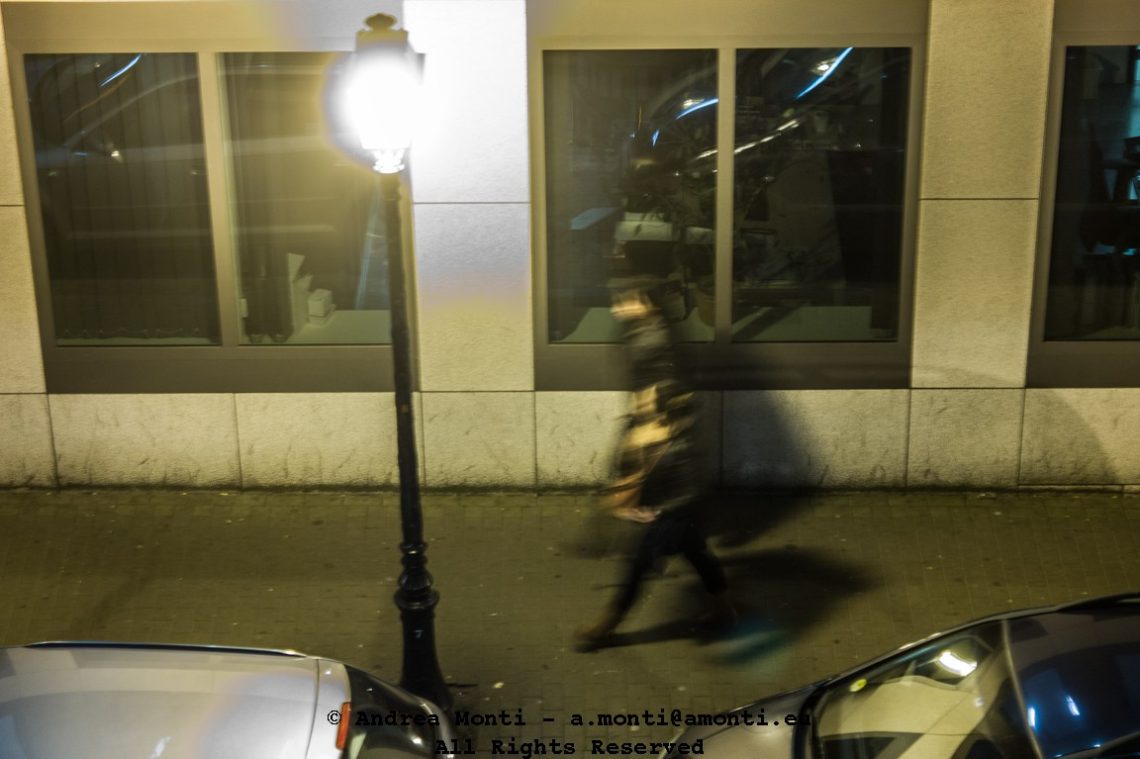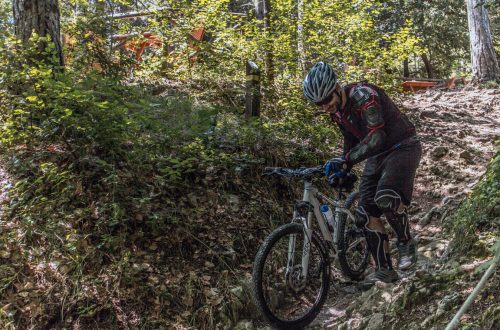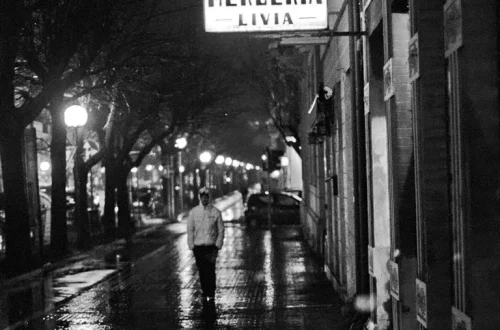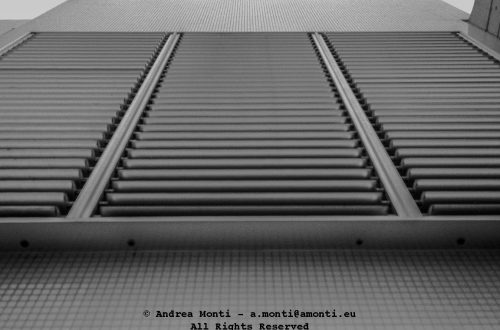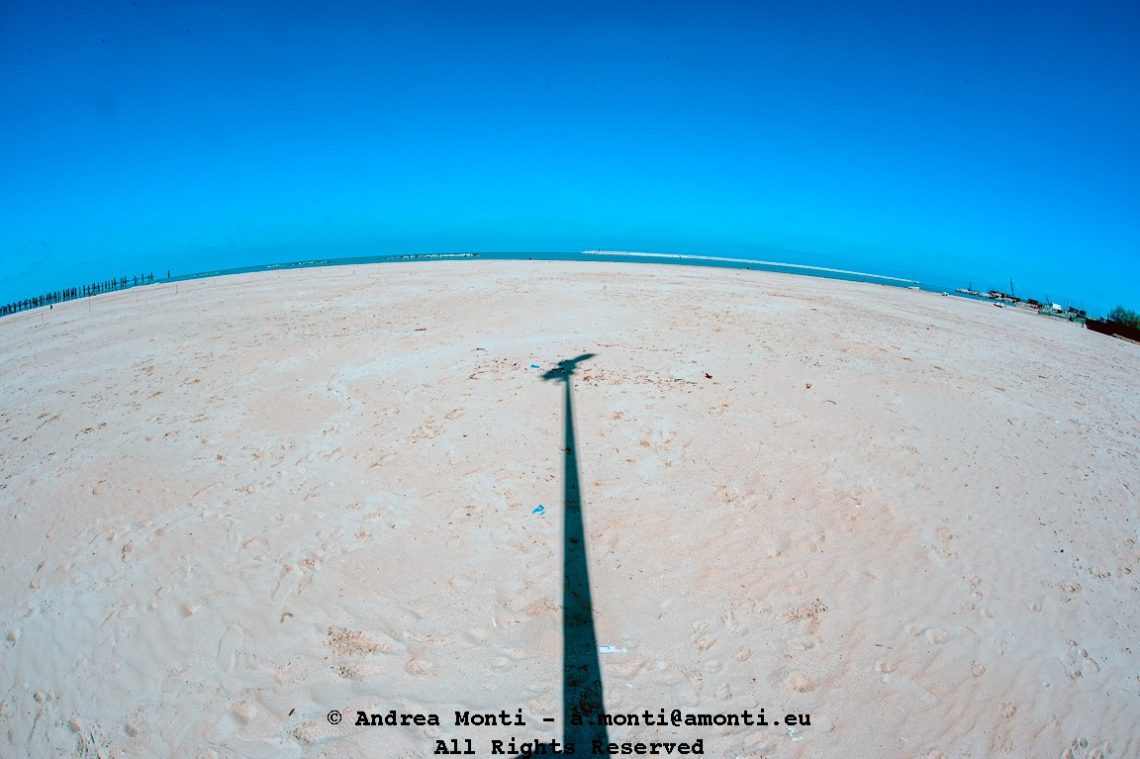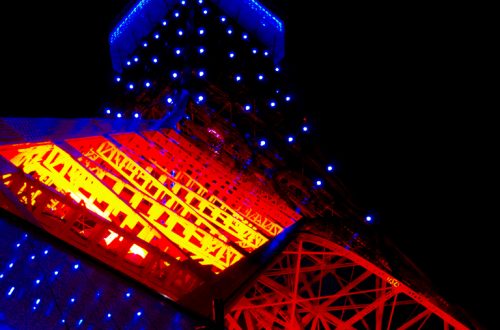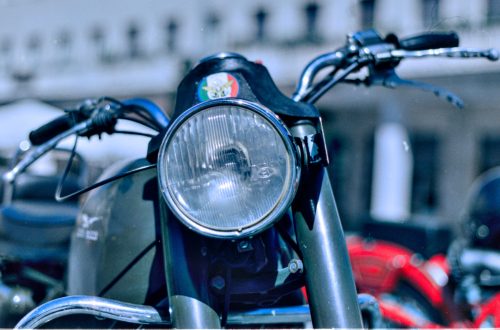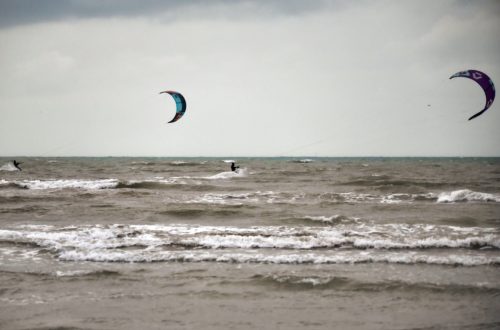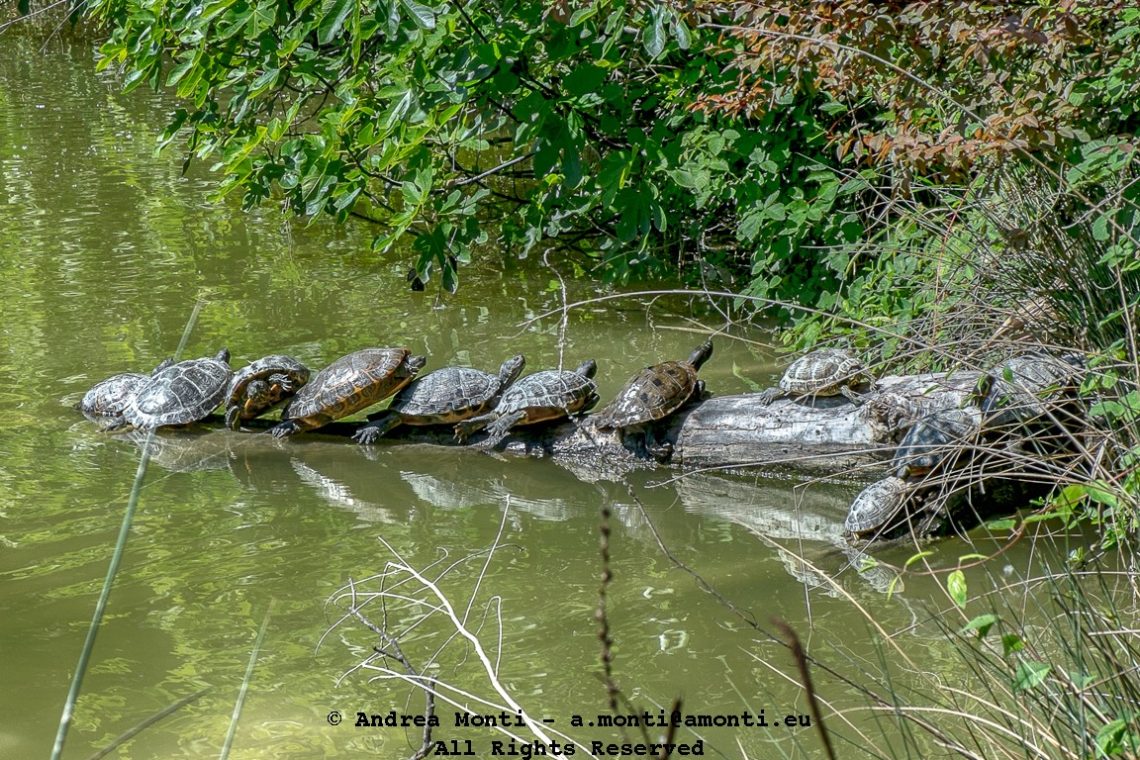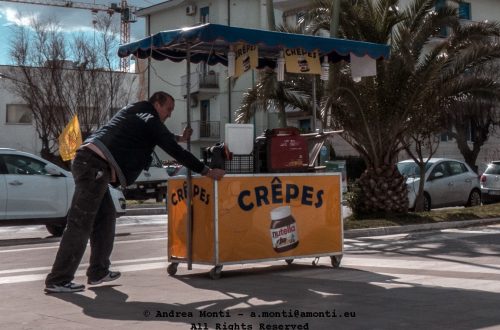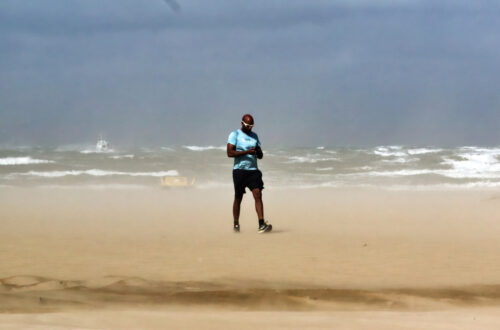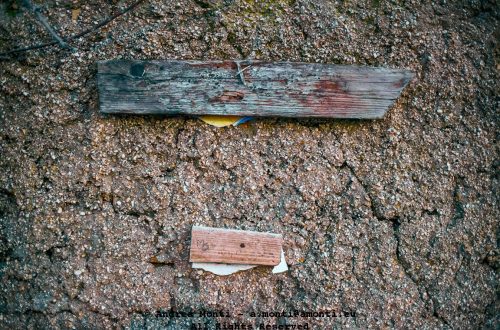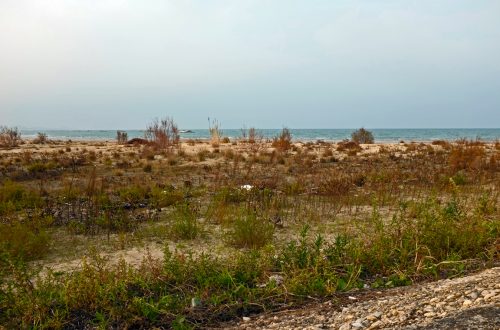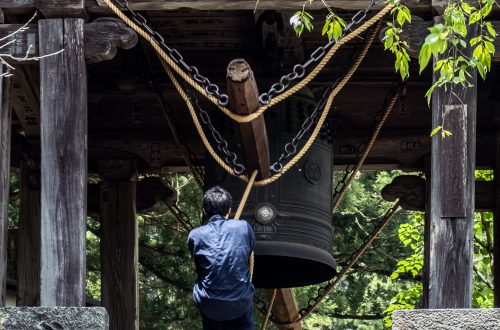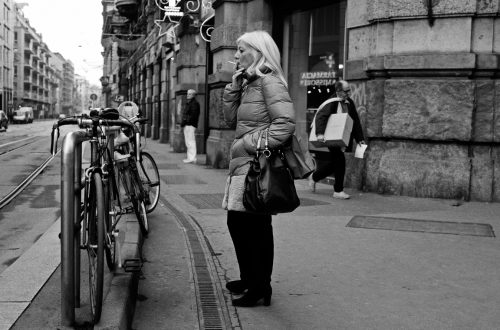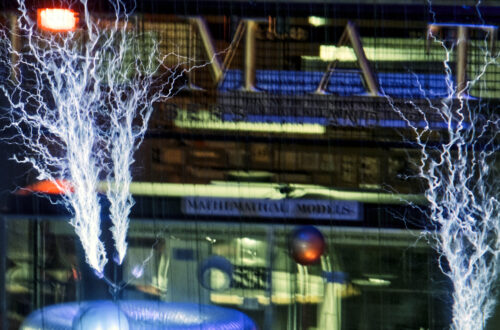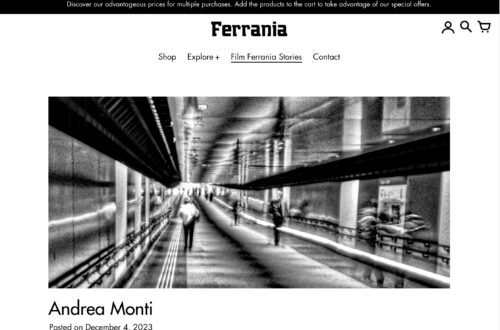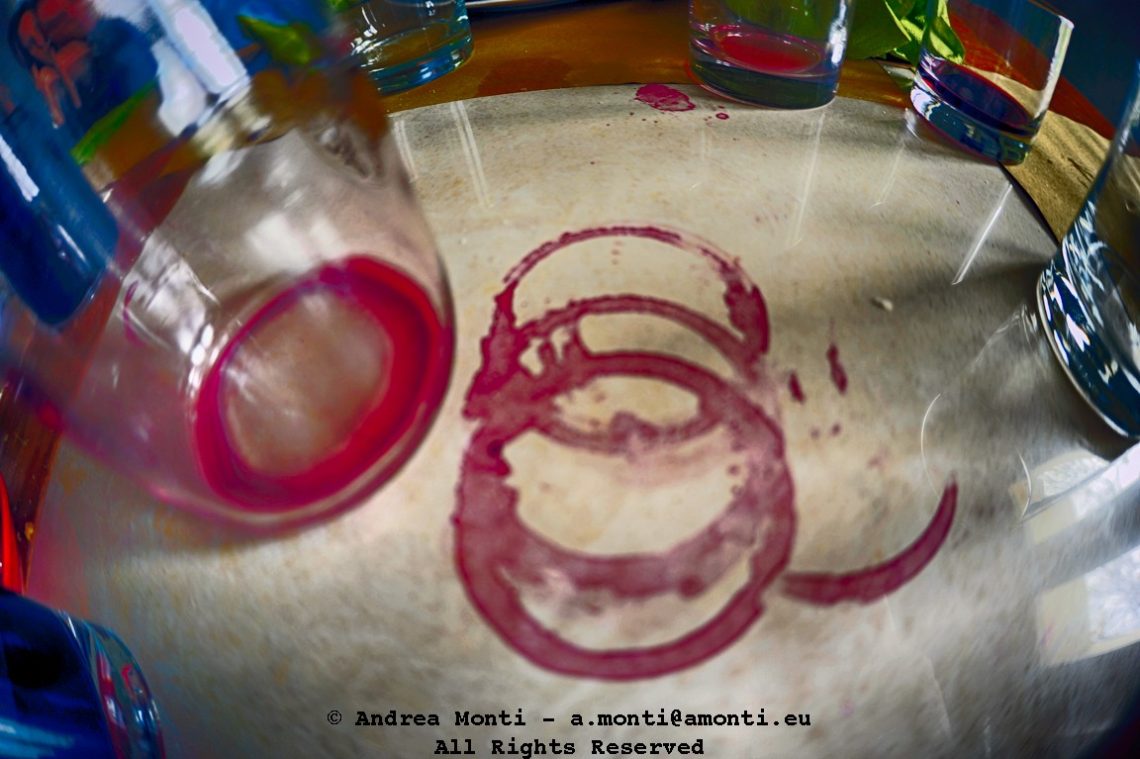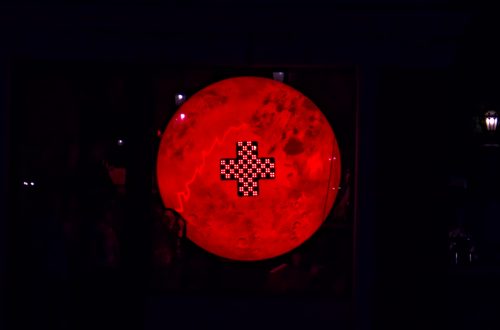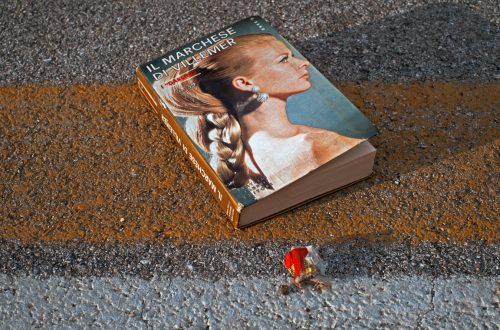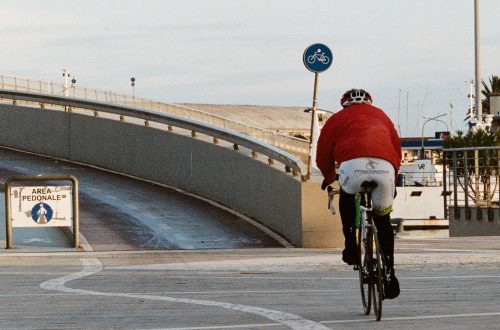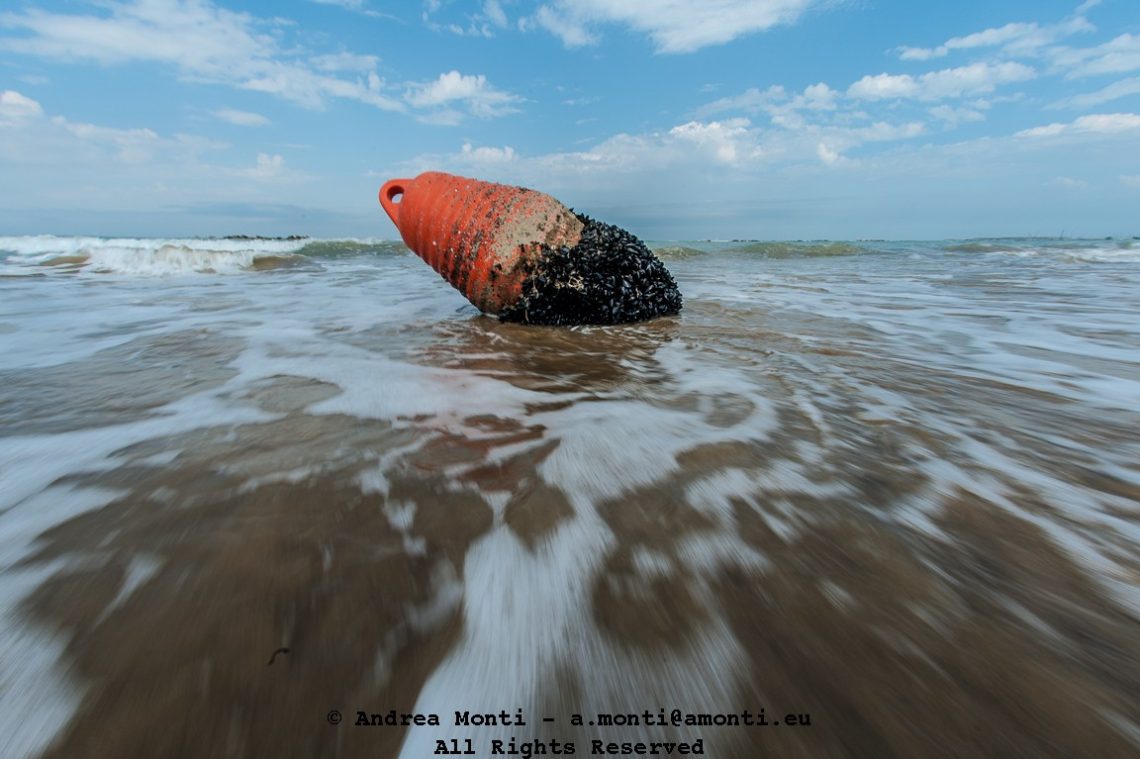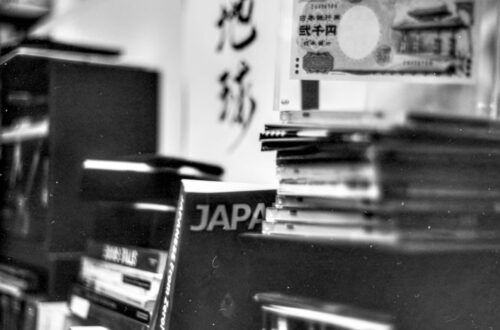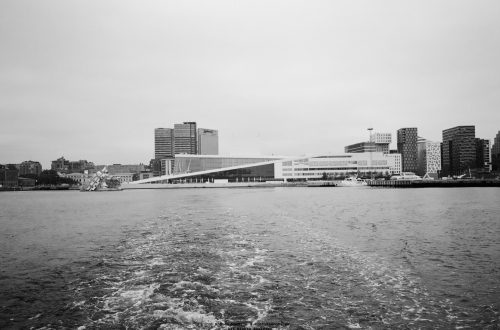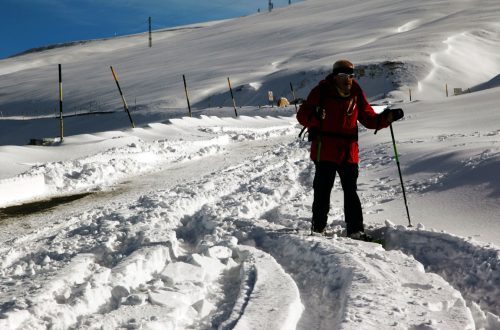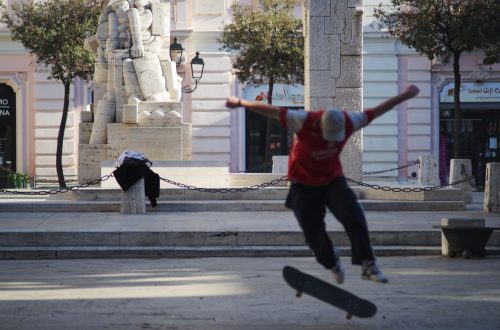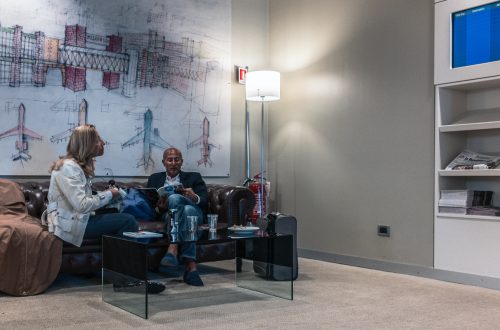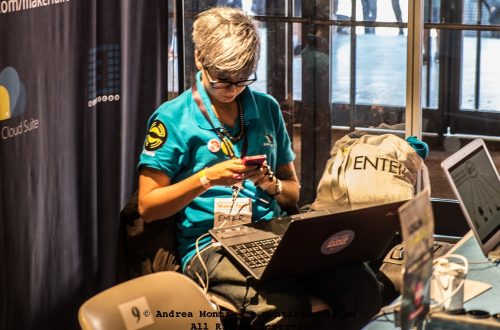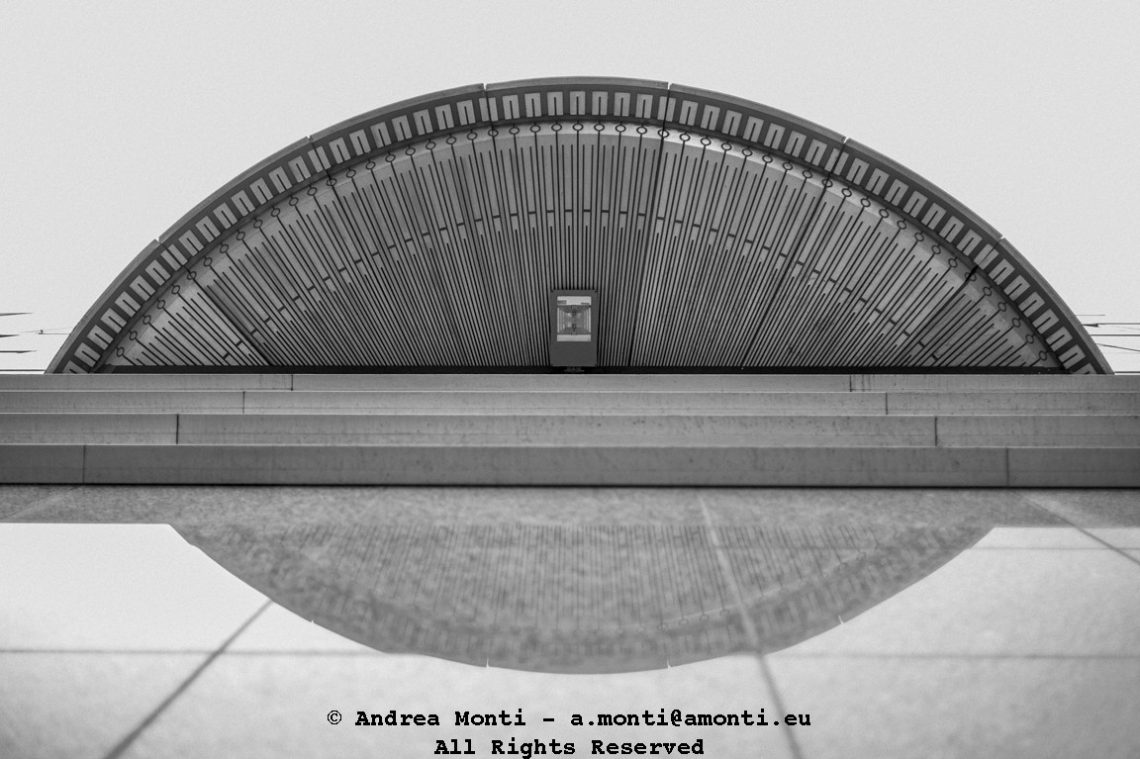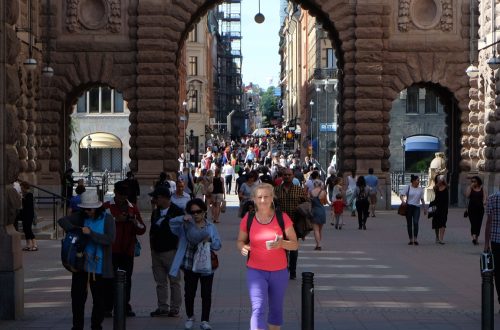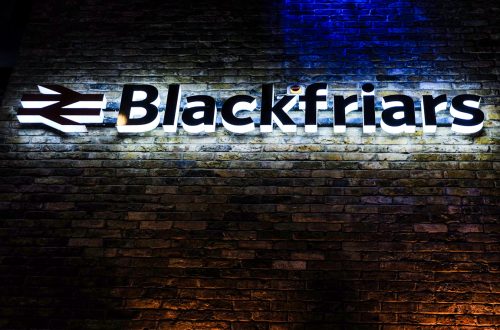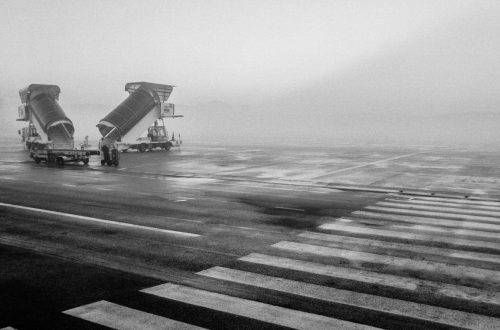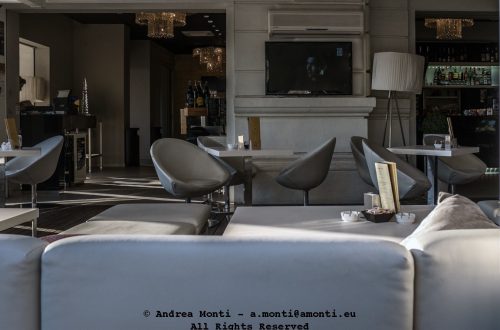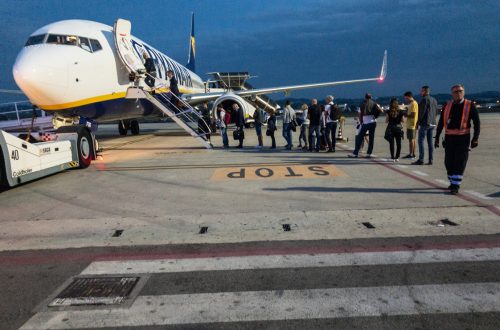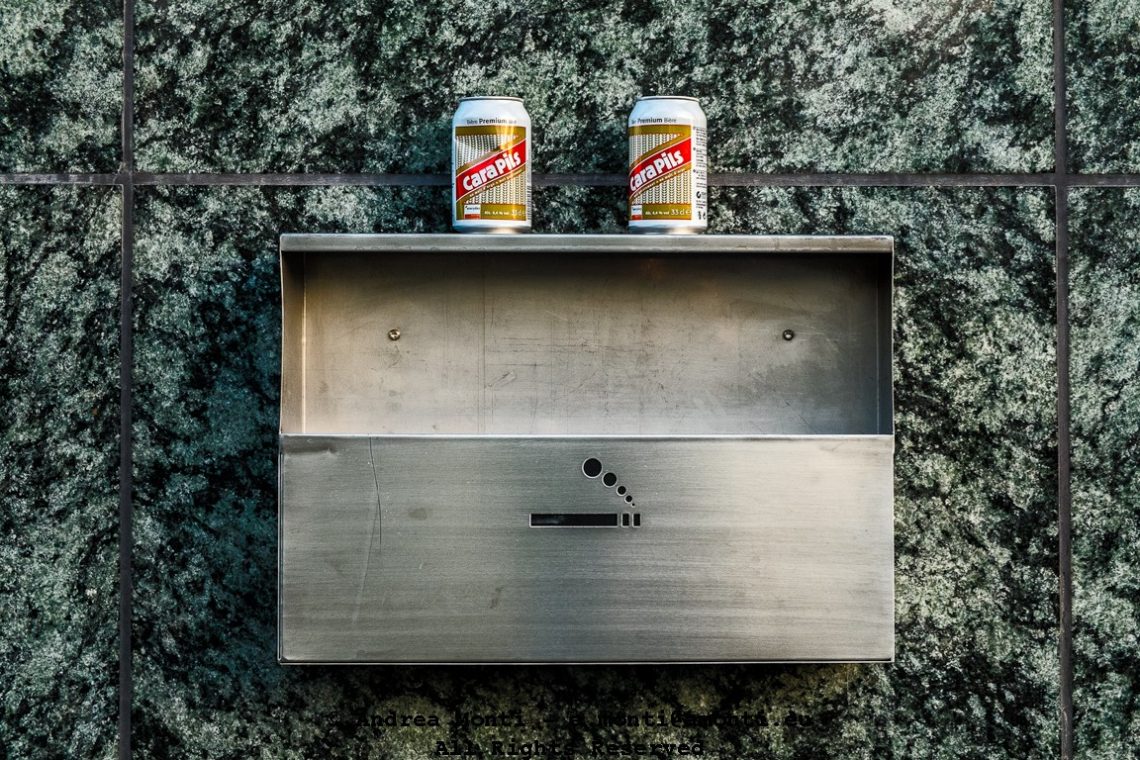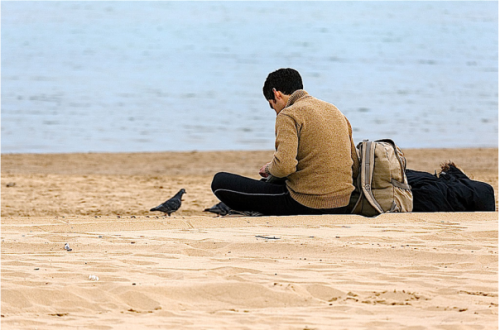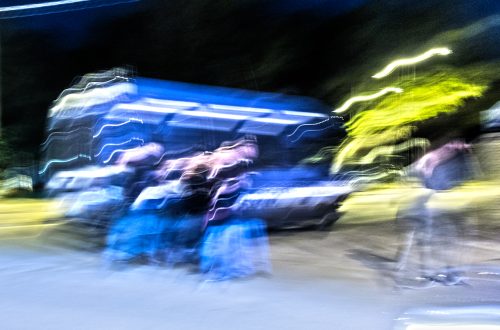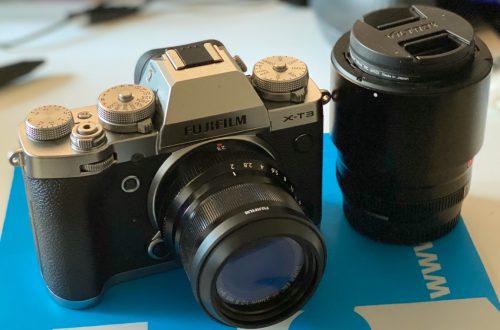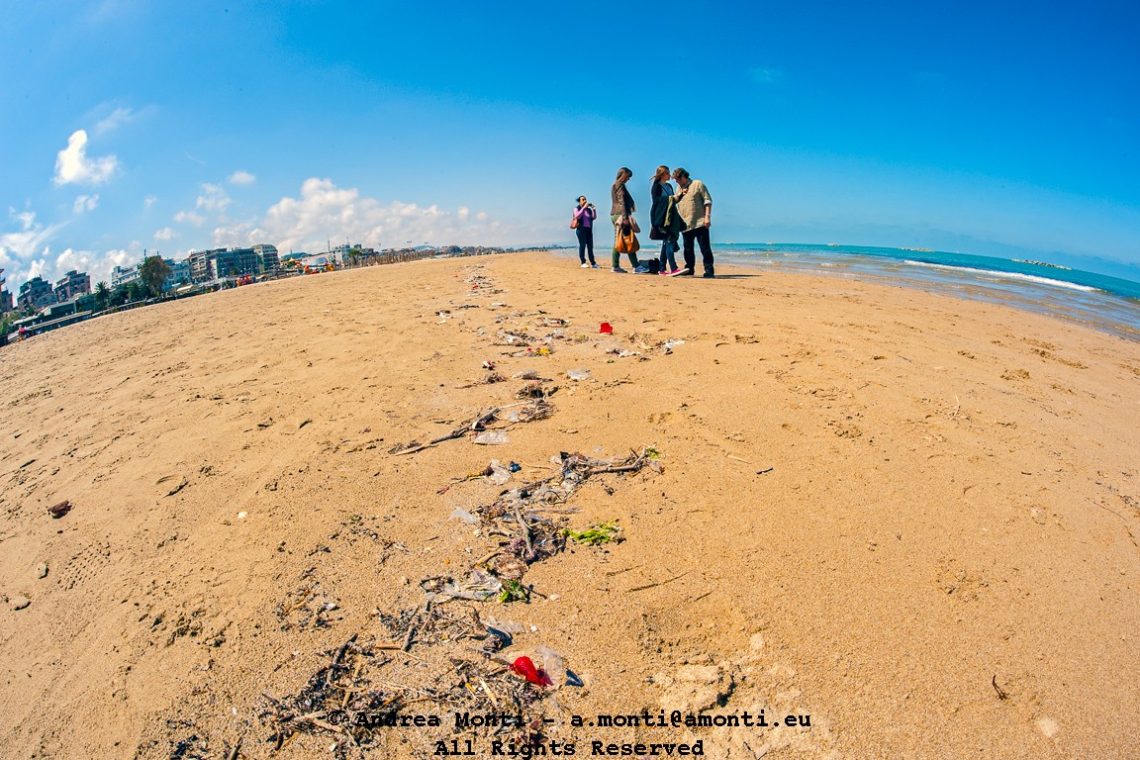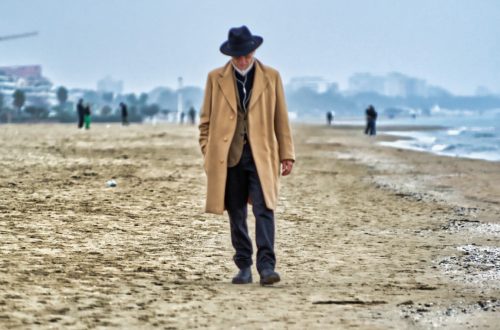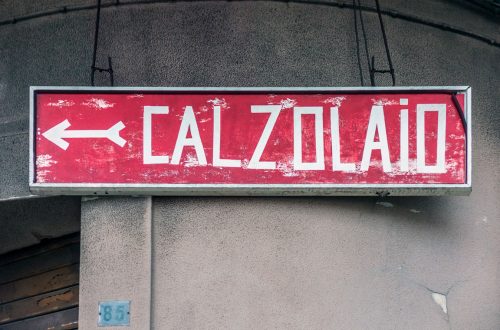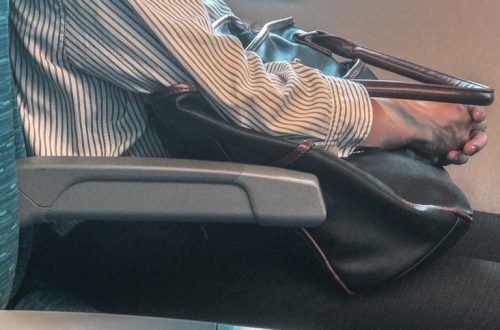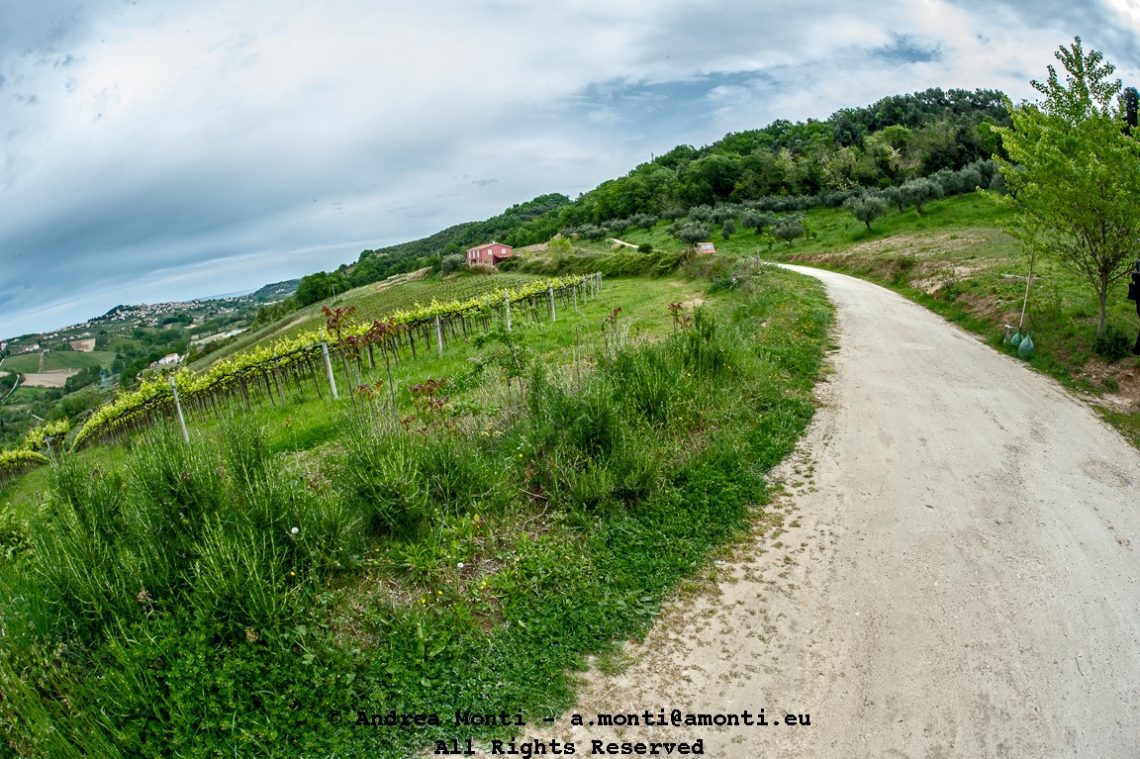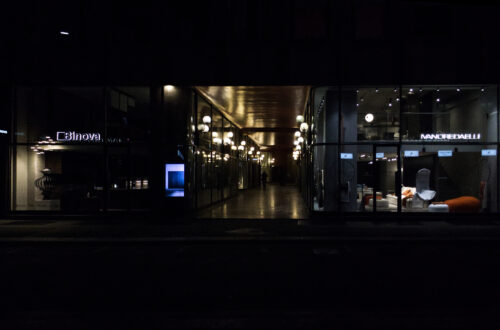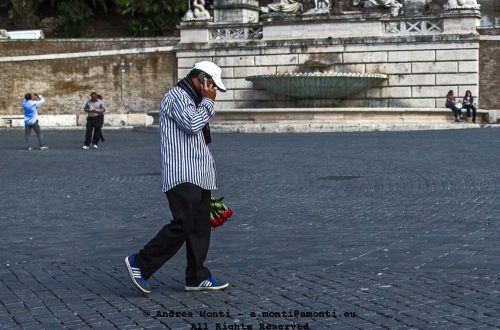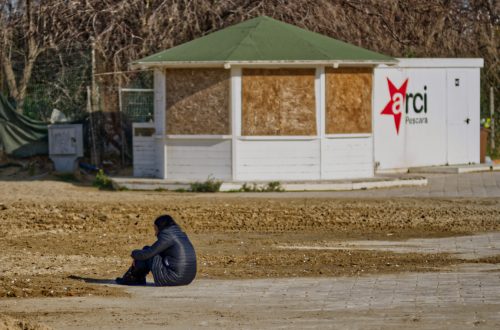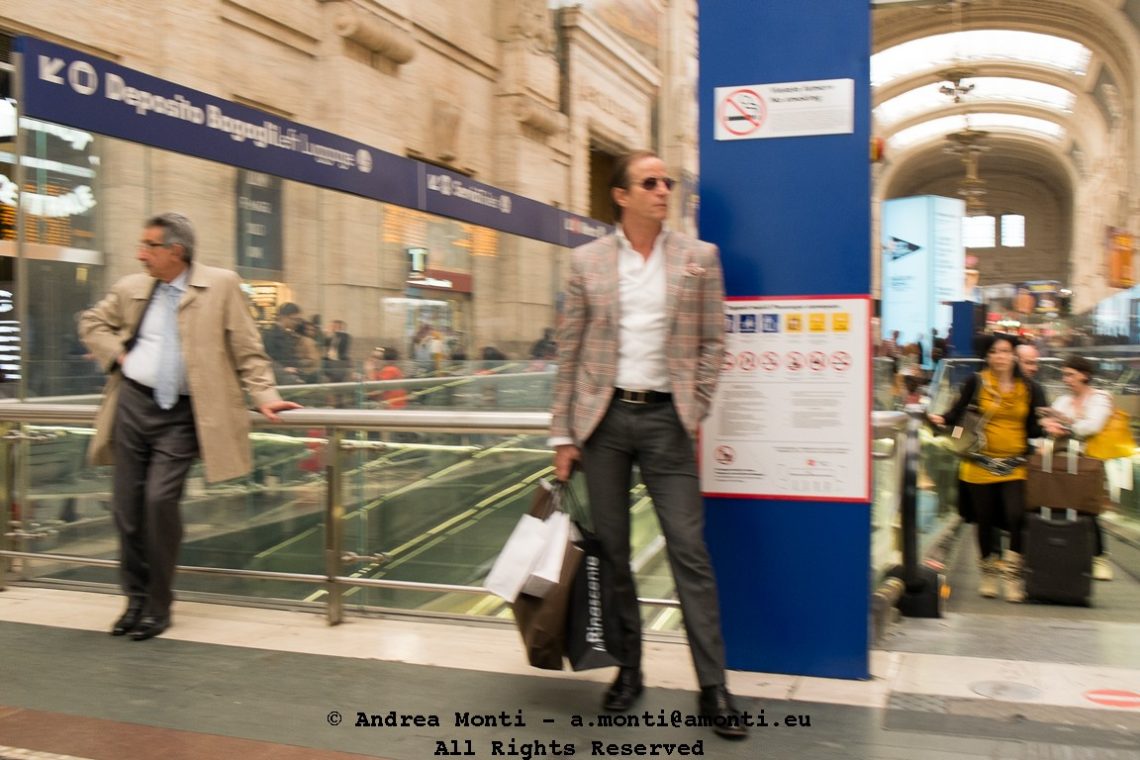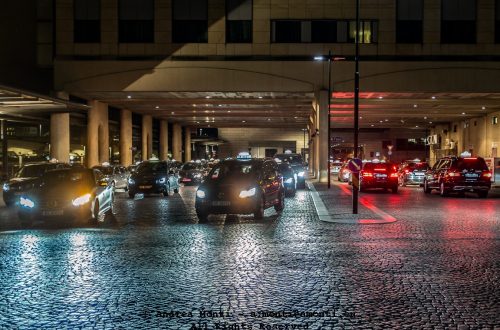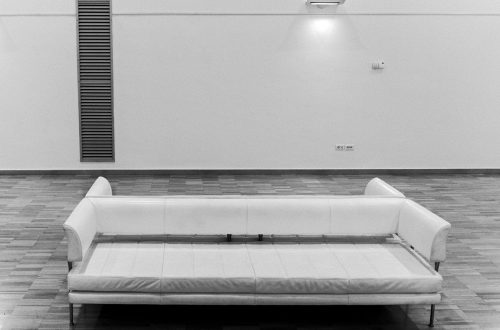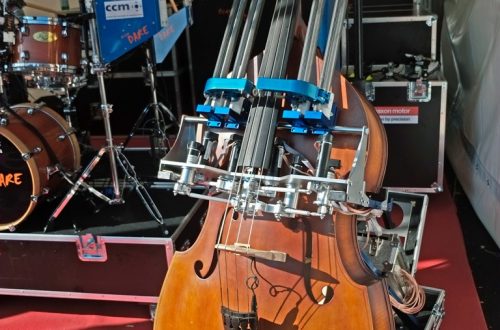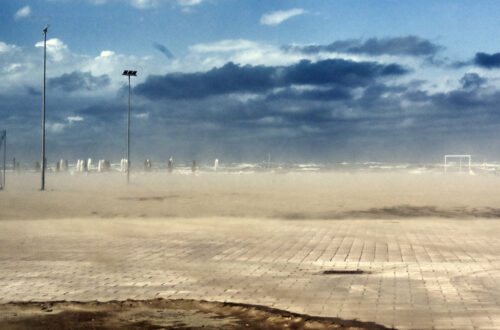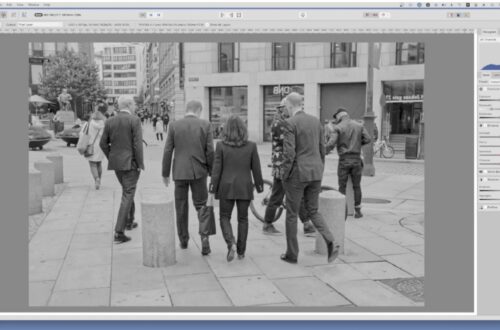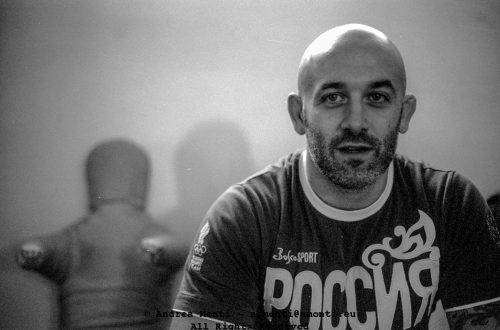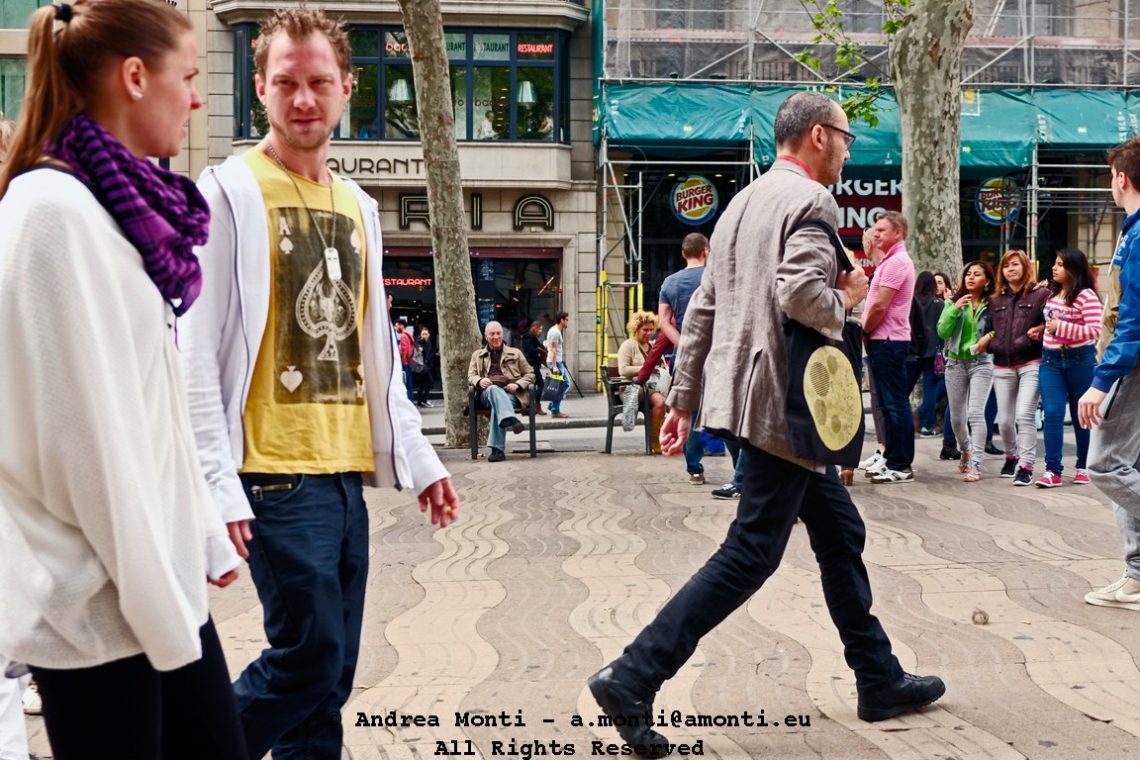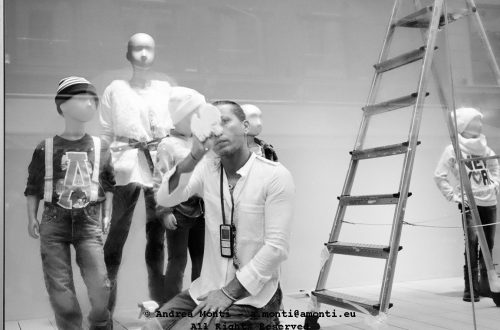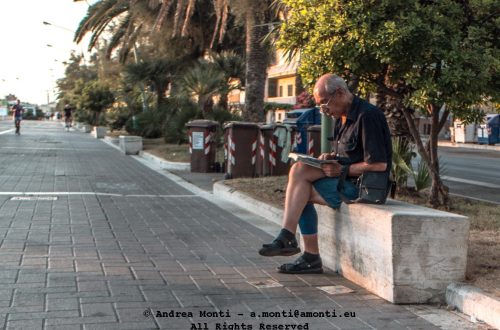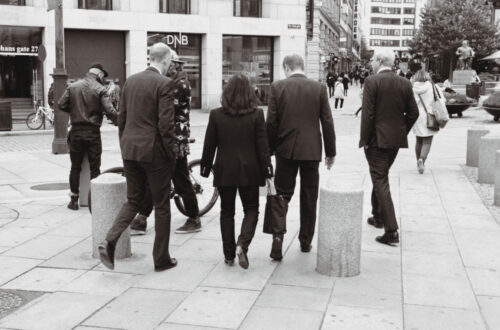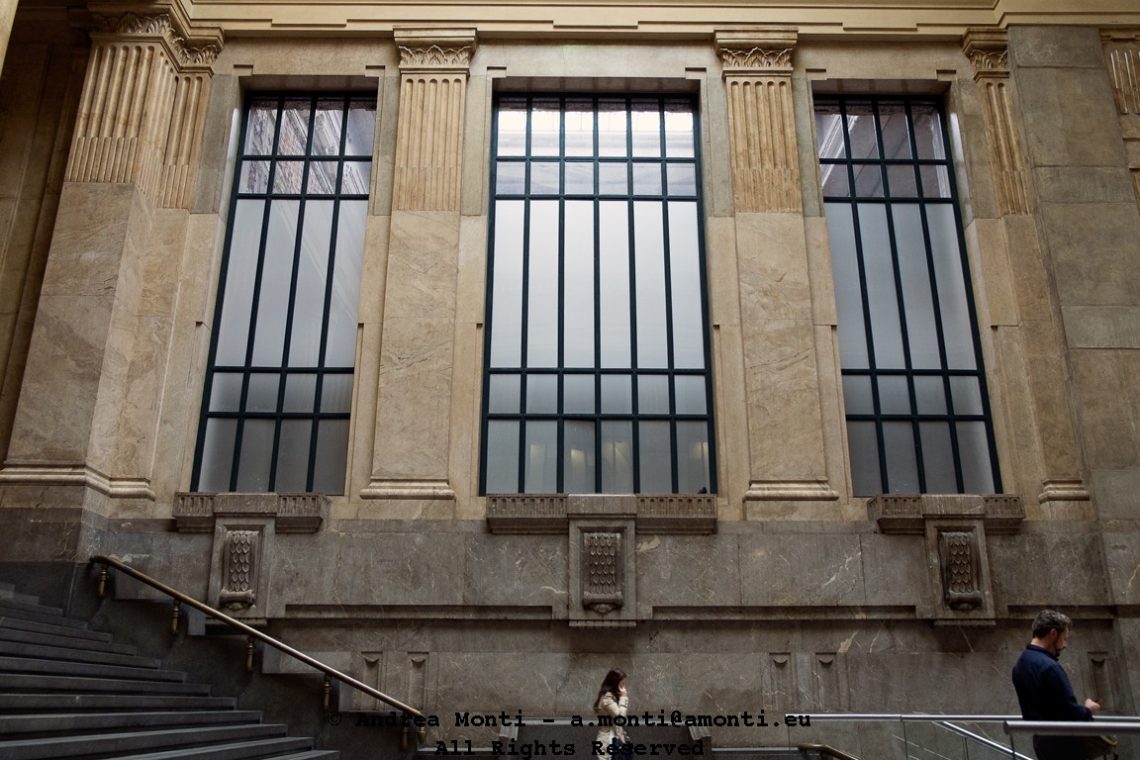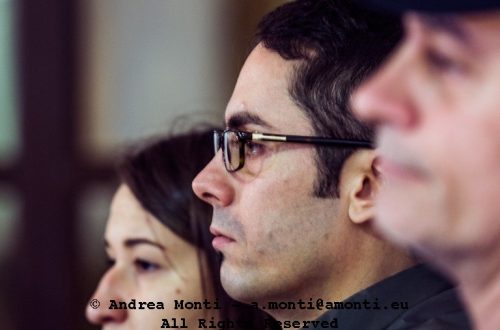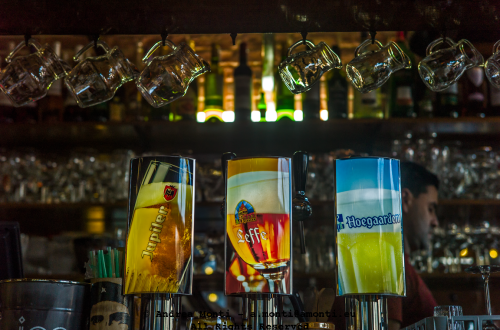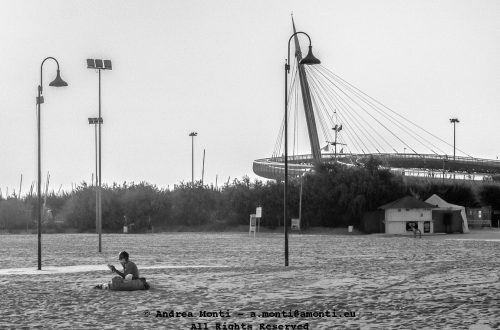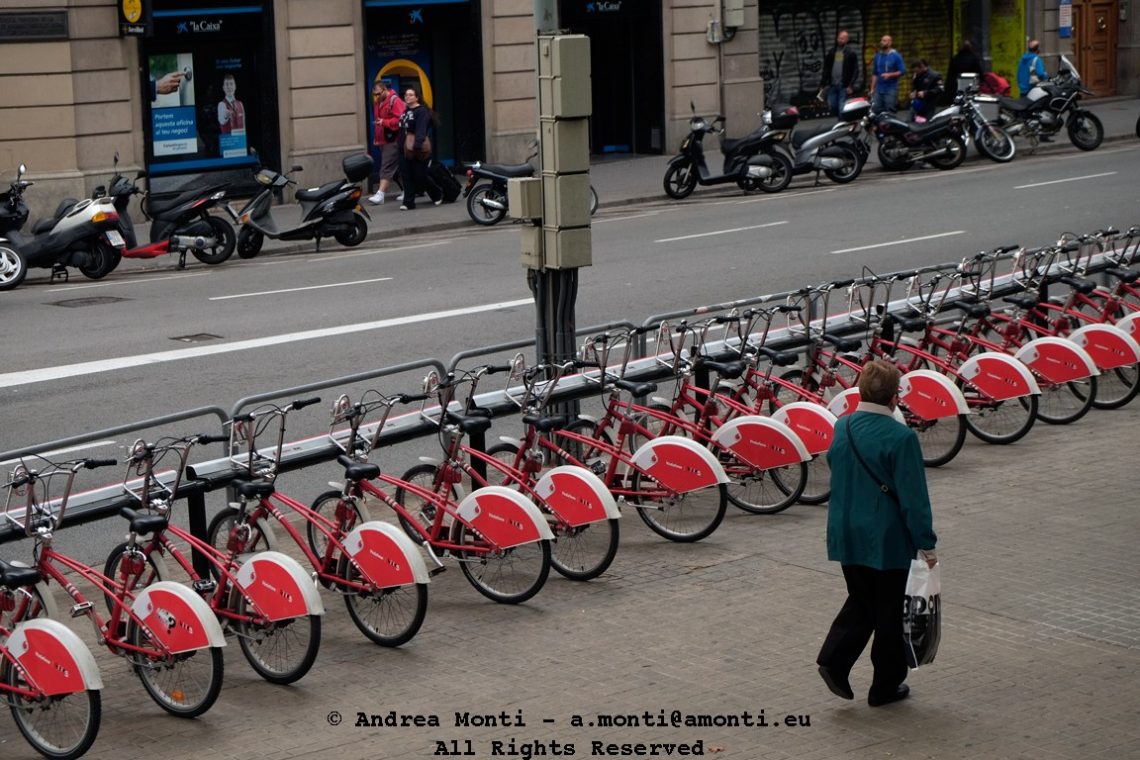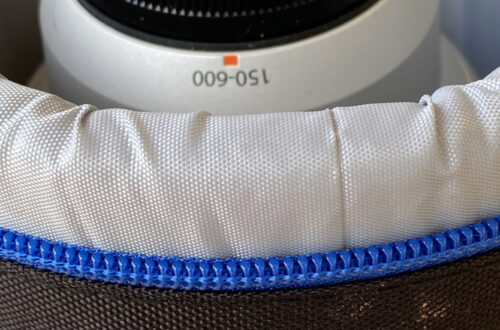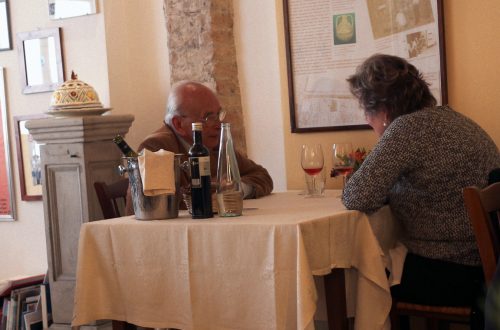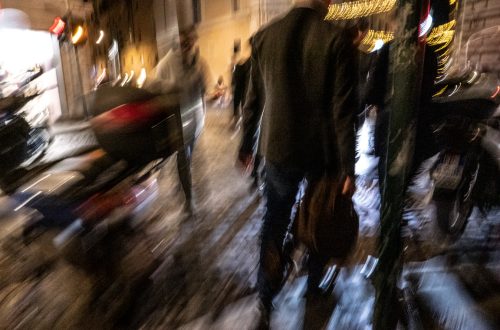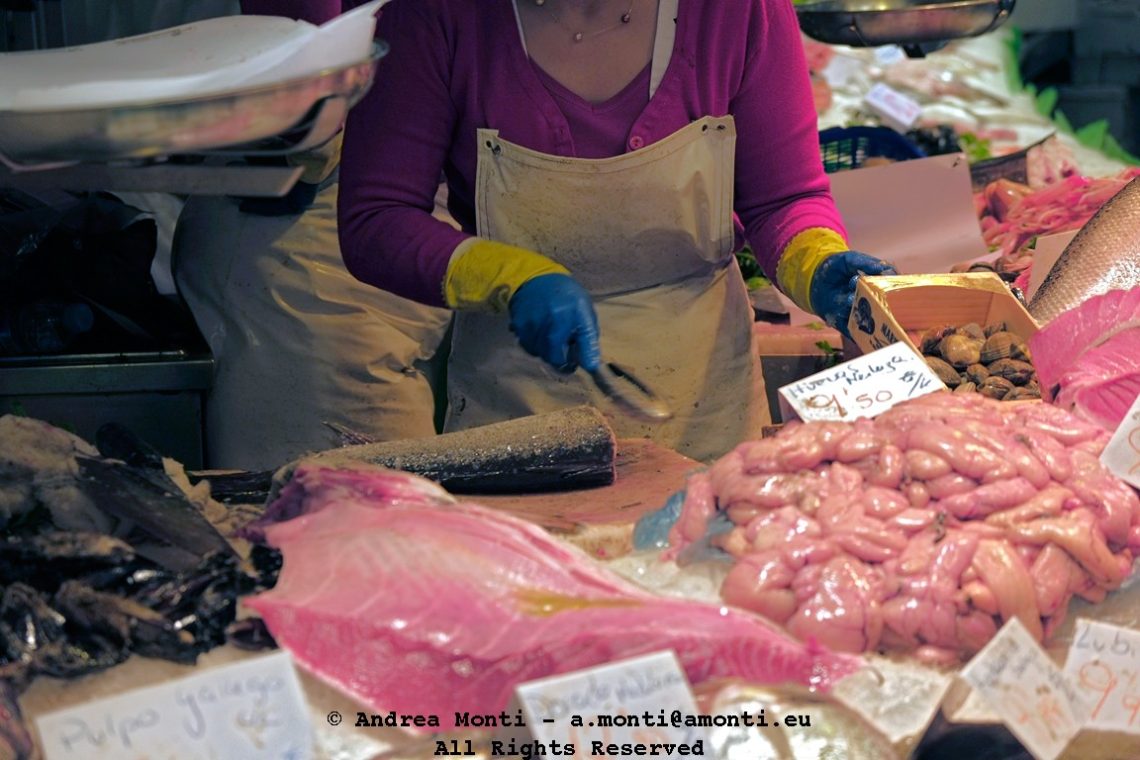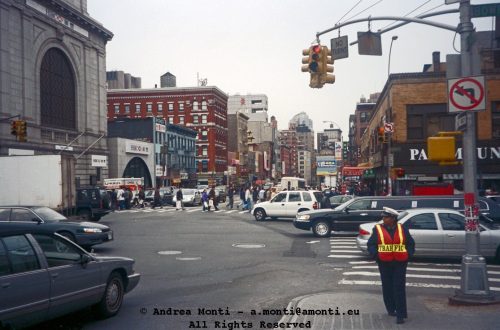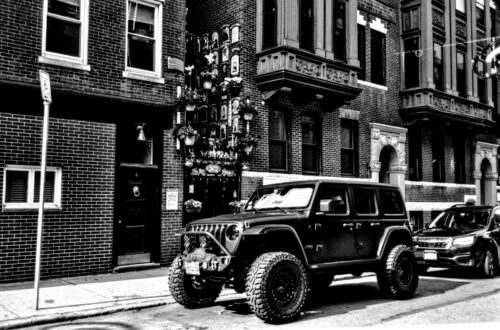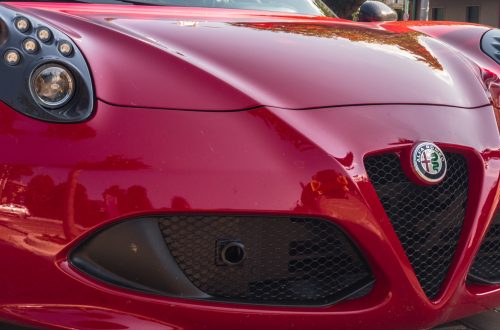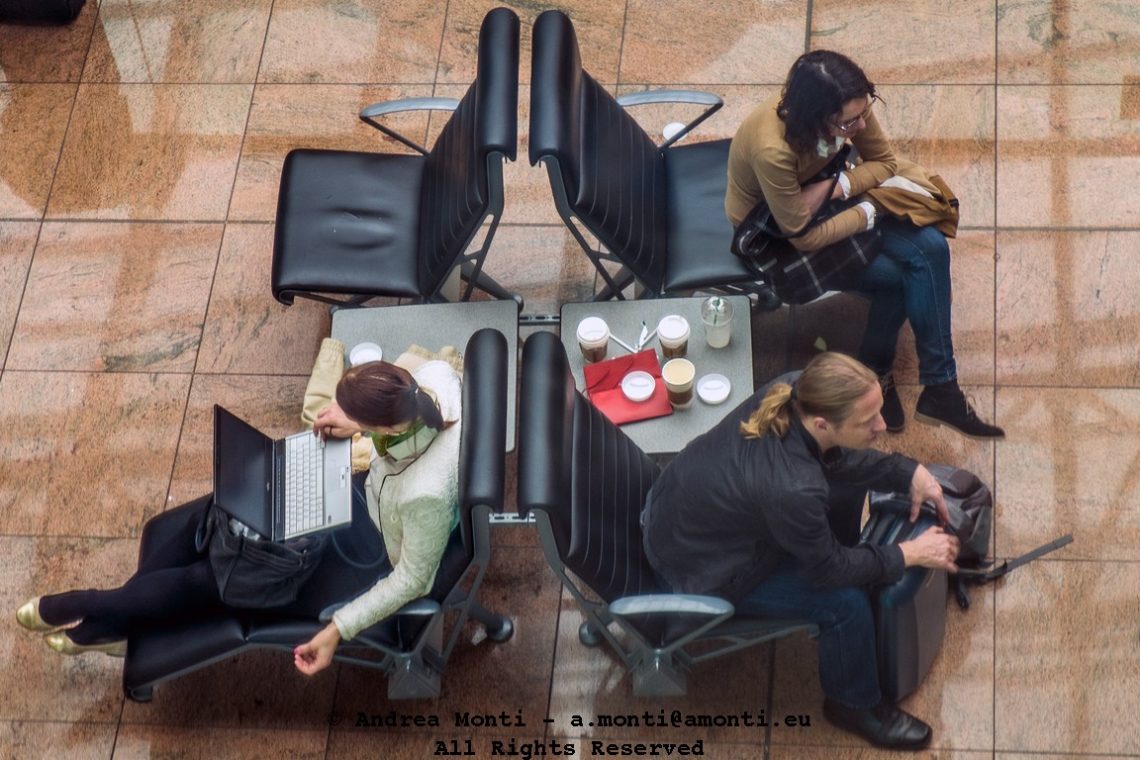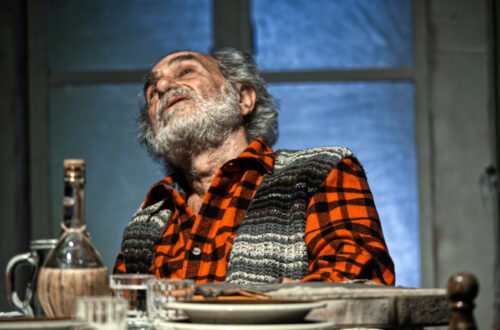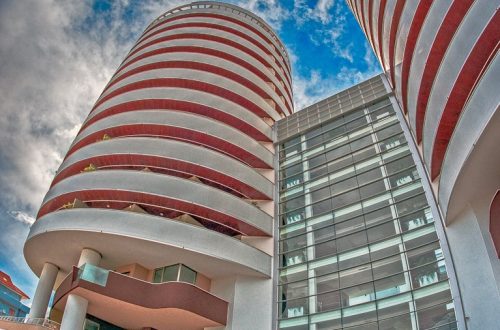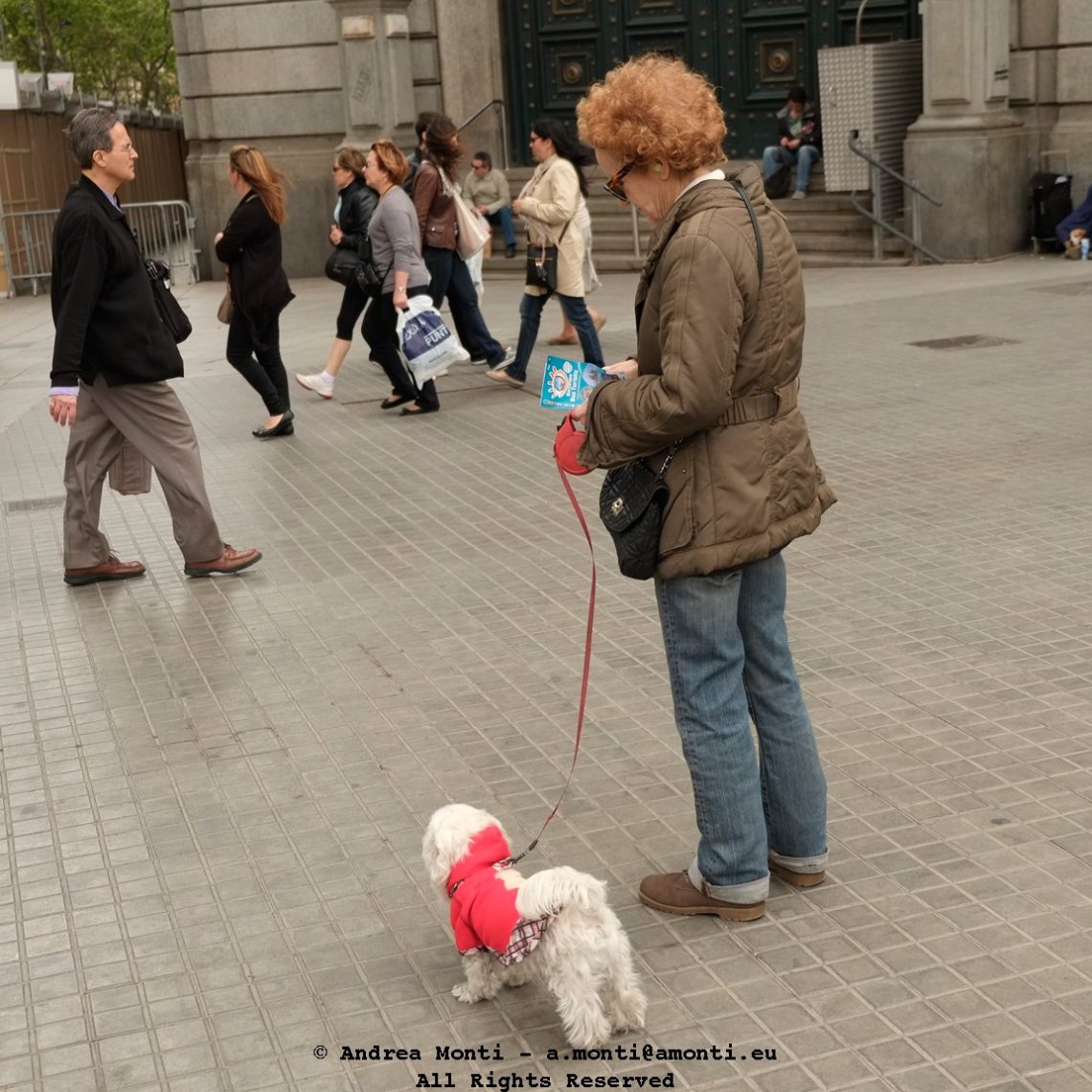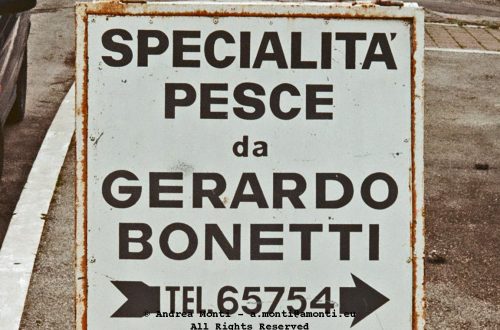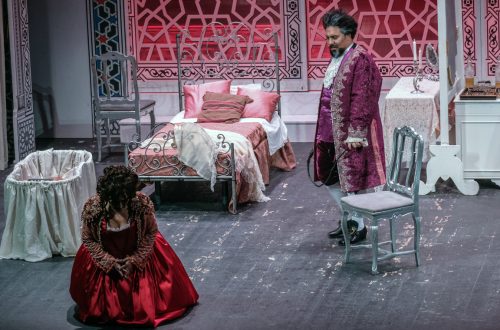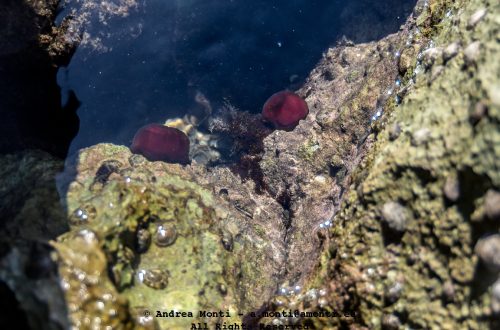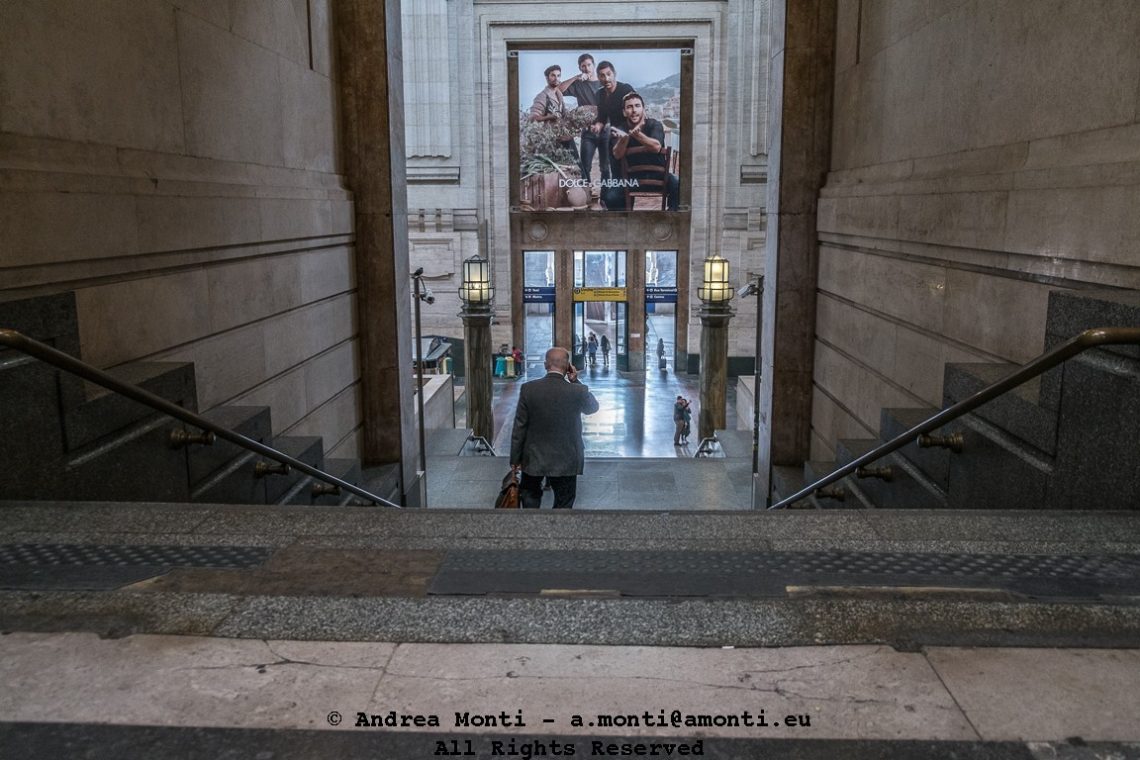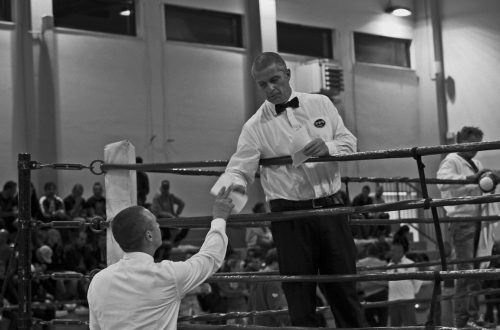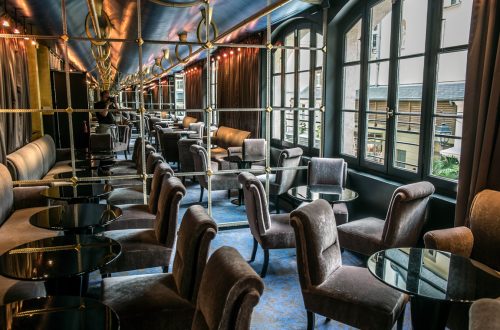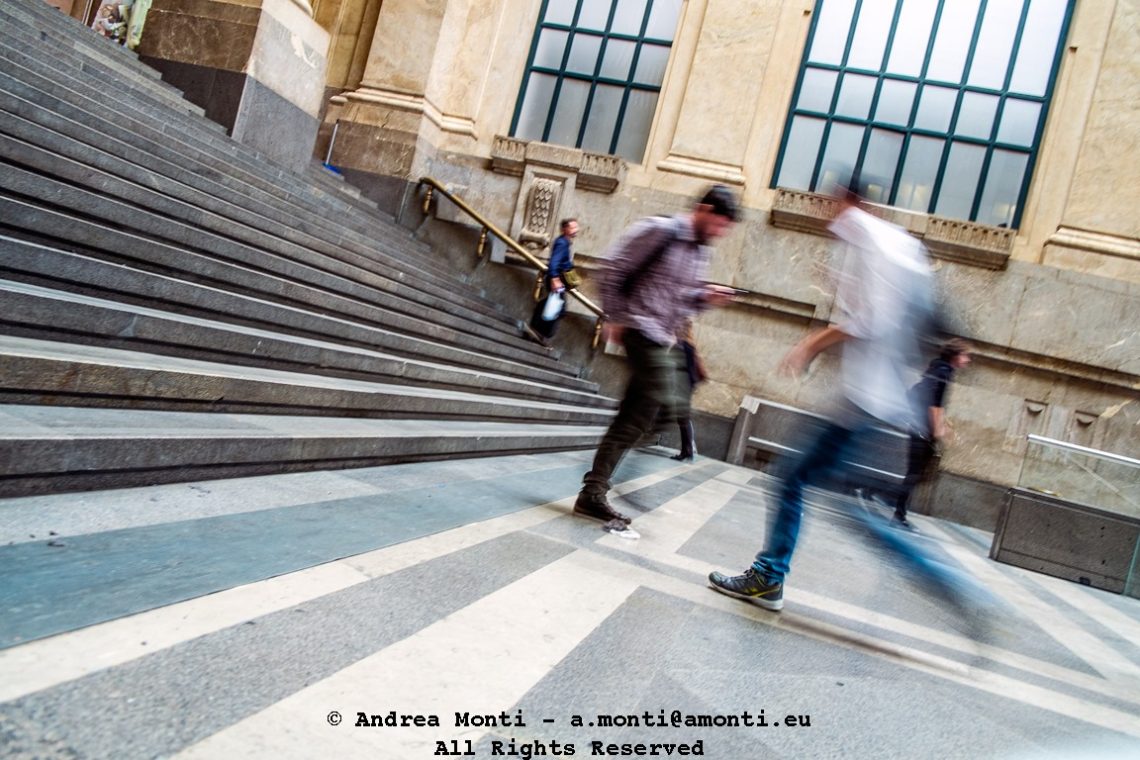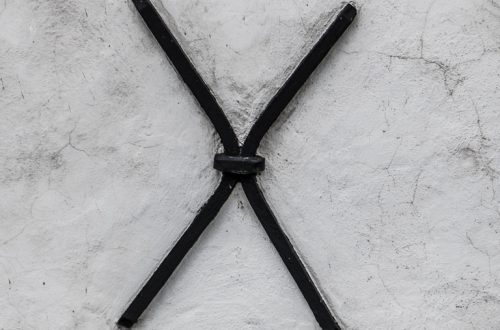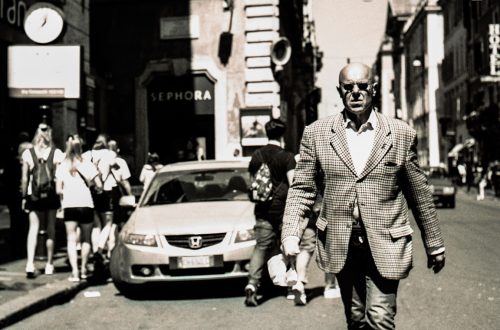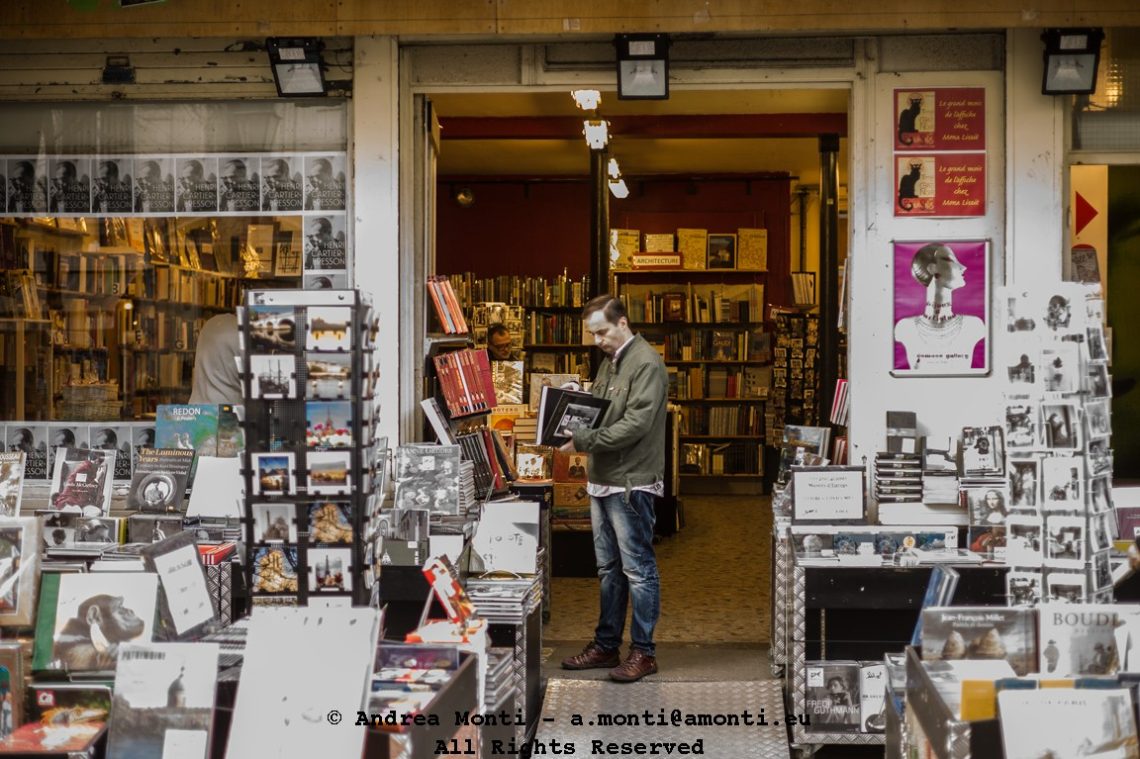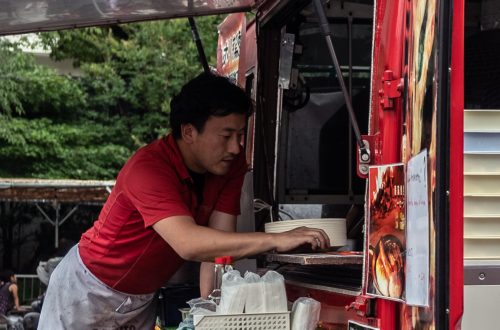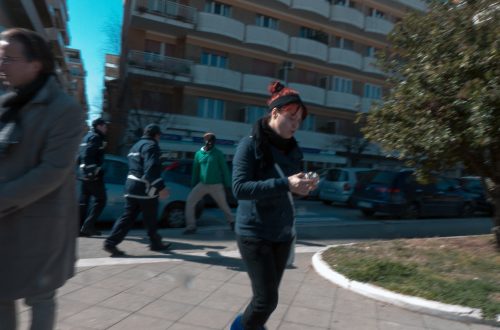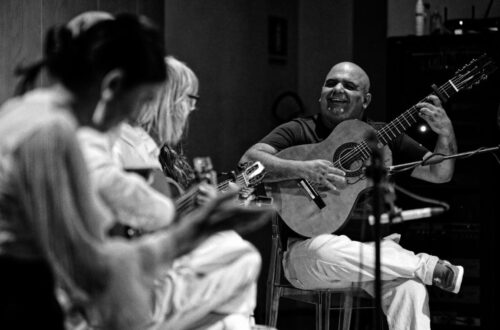-
Belgian Ghosts
Midnight still has to come. But in Bruxelles even ghosts wake up early… The air was damp, the pavement glistening faintly under the sodium lamps. I wasn’t chasing a scene — only watching light. Then someone walked through the frame, absorbed in their own path, and the moment shaped itself. The passer-by moved too quickly for the shutter speed I’d set. At first, I thought I’d lost the shot. Then, reviewing it, I realised that the blur was the picture — motion distilled into presence. The figure became anonymous, spectral, more gesture than person. It summed up urban life in that hour: everyone moving, no one quite seen.
-
Noon on the Beach
this image hinges on simplicity and distortion. The sun was directly overhead, leaving the shadow of the pole as a near-perfect sundial, slicing the centre of the frame from bottom to vanishing point. That shadow was the whole reason to shoot: absolute verticality rendered into graphic contrast on a near-featureless plane. The lens dictates the structure. At 16mm, lines bow. The horizon curves. Perspective exaggerates. I leaned into it—there’s no attempt to correct distortion in post. The intention was not to imitate a rectilinear frame, but to emphasise space as abstraction. The beach becomes a sphere, the sky a ceiling, and the tiny trace of buildings at the perimeter only…
-
Ninja-Turtles?
I couldn’t help but smile when I saw this line of turtles perched neatly along the log, each one angled just so to catch the warmth of the midday sun. It’s a scene that strips away the pop culture fantasy of katana-wielding reptiles and replaces it with something far more universal — the quiet pleasure of simply doing nothing. From a compositional standpoint, I did well to let the log form a natural leading line, drawing the viewer’s eye from the cluster on the left to the stragglers on the right. The surrounding foliage frames the scene nicely, adding depth and a touch of chaos to balance the orderly arrangement…
-
Urban Totem
Once upon a time, a totem helped the soul to get in touch with gods. Nowadays it helps the stomach to be fed.
-
Horizon Bending, Again
-
Red Wine Makes Good Blood…
I made this image at the end of a long lunch — the kind where conversation lingers long after the plates are cleared, and the table becomes less of a place to eat and more a canvas of what just happened. The residue of red wine had bled into the paper surface, leaving behind those familiar circular stains — not accidental, not staged, just there. And I leaned in, glass still in hand, and shot. Technically, this is an exercise in distortion and proximity. I used a wide lens, close focus, and a shallow depth of field. The resulting visual field is warped, but purposefully. You can see the sweep…
-
The Misplaced Buoy
Kneeling in the surf with the camera just above waterline, I framed this beached buoy like a stranded witness—half-devoured by barnacles, its functional past eroded by time and tide. The wave motion is deliberate: a slow shutter gave the water its painterly strokes, pulling the viewer toward the object with a sense of gentle urgency. The wide-angle perspective exaggerates scale and places the buoy in stark contrast with the horizon. The red-orange plastic punctures the cool blues of sea and sky, a sharp chromatic discord that anchors the entire composition. It’s an aggressive intrusion into the otherwise pastel calm of the shoreline, yet visually satisfying because of the balance created…
-
Protected: Prova Aurum
There is no excerpt because this is a protected post.
-
The Eye
Another example of the constant brain’s meaning quest in the things the eye sees. It wasn’t supposed to look back. This is the underside of a building’s curved overhang, a detail most people would never glance up to see. Shot from the ground in perfect alignment, it becomes something else entirely: an iris of steel and shadow, a lens with no glass, watching the world below. I titled it The Eye not just for the shape, but for the feeling. The symmetry is strict—deliberate, almost mechanical—yet the reflection in the polished granite softens it, turning precision into something poetic. A full circle emerges where there’s only a half. What’s solid becomes imagined.…
-
Footprint
Still… wideing.
-
Two Beers, One Cigarette
Not staged. Swear to God!
-
On the Edge of the World
This image is the outcome of a technical test as much as it is a commentary on environment and perception. I wanted to see how the venerable 1973 Nikkor 16mm f/3.5 fisheye would behave on the full-frame sensor of a Nikon D700. The result is a picture pulled to its edges, both optically and metaphorically. What this lens gives in distortion, it returns in expressive tension. The beach curves like the edge of a planet. The sky presses down as if it’s wrapping itself around the scene. A single line of debris cuts through the frame, pulling the eye toward a loosely gathered group of people, whose presence feels both…
-
Bent
When I first lifted the camera to my eye for this shot, the Nikkor 16mm fisheye was not the lens you’d expect for such a pastoral, rolling landscape. Fisheyes, after all, are often the tools of cramped interiors, extreme sports, or deliberately surreal perspectives. Yet here, in the middle of vineyard country, I wanted to see what would happen if I let its inherent distortion play with the natural undulations of the hills. The result is a scene that feels almost elastic. The road on the right curves away more dramatically than it does in reality, while the vineyard rows tilt into an exaggerated arc, their geometry bending to the…
-
Damned Autofocus
I like this photo very much. The two travelers, mutually unbeknownst, stroke a pose like if they were on duty fashion models. Unfortunately, the Fujifulm X-E1 autofocus didn’t work fast enough and, as I’ve already told, zone-focusing is a pain in the neck without a properly marked focus-ring. Long live to Hasselblad, Zeiss, Leica and Nikon…
-
Brain vs Camera
The picture on the left is what the camera saw. The picture on the right is what I had in mind while shooting. Thanks to Photoshop I’ve been able to bend the “objectivity” of the camera along the line of my creativity.
-
Las Ramblas’ Lifestyle
Who cares about pickpockets?
-
Reasonable Privacy Expectation
There is something almost cinematic about this frame. The architecture dominates: a vast façade of marble and glass, its verticality emphasised by the tall, narrow windows, the symmetry broken only by the two small human figures at the bottom. They are dwarfed by the structure, physically and visually, and yet they animate the space just enough to draw our eye away from the grand design and towards the everyday. Compositionally, the image is measured and deliberate. The camera is held level, avoiding converging verticals, which is crucial in architectural photography. The placement of the figures — one ascending the stairs, the other absorbed in a phone — adds a natural,…
-
Which One?
The Abundance’s Paradox
-
A Fujifilm X-E1 Annoyance
The X-E1 is a good camera, though has some annoyances that make it less handy for Street Photography. Contrary to Leica, (some) Zeiss or (some) Nikon lenses, zone-focusing is not set on the lens barrel. You must do it either through the viewfinder or the LCD, and this makes problematic the switch from one technique to another. Same is true for aperture settings. Operating the camera one-handed, happened twice to me, led to a change of the image quality settings from RAW to Jpg. Unfortunately I wasn’t aware while shooting and I’ve wasted half a day in Barcelona getting inferior quality pictures.
-
Same Seats, Different Lifes
They’re close, but never been so distant
-
The Bodyguard in Red
This frame happened in a square full of motion, but all I saw was this frozen pair: a woman checking a map, and her dog—a small, white, overdressed sentinel—standing squarely on duty. What amused me wasn’t just the dog’s outfit (hood up, leash taut, plaid trim), but the posture. Alert. Angled. Watching the flow of pedestrians like a security detail in fur. I made this image with the intention of isolating a moment within the broader current of urban transit. The pedestrian stream moves left to right—fast, disengaged, anonymous. Meanwhile, the woman and her dog form a perpendicular axis. They’re static. They interrupt the flow. That tension is what holds…
-
Too Busy to Enjoy the Life…
-
Flashes’ Forgotten Powersuits
When I pressed the shutter, I wasn’t chasing irony. It emerged later, in the edit, when I realised this looked less like a street photo and more like a comic panel stripped of its ink—The Flash and Kid Flash mid-sprint, anonymous in civvies, caught in a blur between timelines, rushing to fix a multiverse misstep but forgetting the suits that gave them identity. The angle was deliberate. I tilted the frame to exaggerate imbalance, to underline the diagonal force of movement surging left to right. The grand stairway of Milano Centrale—the actual location—becomes a stage. Lines, shadows, steps: they all stretch and funnel speed. The architecture is static but theatrically…
-
Quality Check. Try Before You Buy
This image was taken outside a Parisian bookstore, a moment as classic as it is current: a man stands in the entrance, thumbing through a photobook, absorbed but casual. It’s not staged—he didn’t even glance at the camera. He was too focused, as anyone who’s spent hours weighing the purchase of one more photography book will understand. His expression wasn’t about doubt; it was about judgment—quality check, plain and simple. The composition offered itself. Framed by the bookstore’s open door, the man becomes the central figure in a visual funnel, surrounded by vertical stacks of books, postcards, and prints. The image flattens space into layered density—foreground filled with titles, background…
